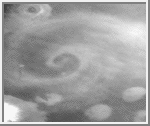 Cyclonic Disturbances
Cyclonic Disturbances
Along the edge of the polar cap, cyclonic disturbances are common during the late summer and fall. This storm system is located at the edge of the northern polar cap. In the foreground, frost can be seen as bright areas. (Image Credit: Calvin J. Hamilton)
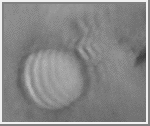 Lee Wave
Lee Wave
This is a good example of a lee wave associated with an impact crater. Note the wave periodicity in the clouds. (Image Credit: Calvin J. Hamilton)
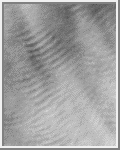 Wave Clouds
Wave Clouds
Wave clouds usually occur at the lee of a large obstacle. They are often found at the edge of the polar cap, and in the Tharsis and Lunae Planum regions. (Image Credit: Calvin J. Hamilton)
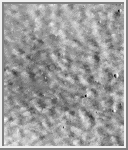 Cloud Streets
Cloud Streets
The cloud patterns illustrated by this image exhibits a double periodicity. These types of clouds usually occur close to the northern-polar cap and in the Tharsis and Syria Planum regions. (Image Credit: Calvin J. Hamilton)
 Streaky Clouds
Streaky Clouds
Streaky clouds seem to be found most everywhere; however, they seem to be more concentrated in the highlands southwest of Syrtis Major. (Image Credit: Calvin J. Hamilton)
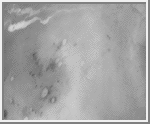 Fog
Fog
Fog often appears in low-lying areas. It typically occurs in the southern hemisphere especially in the Argyre and Hellas basins. It forms frequently in craters. Occasionally, it occurs in higher regions such as Sinus Sabaeus and Solis Planum. (Image Credit: Calvin J. Hamilton)
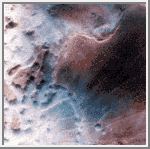 Clouds in Noctis Labyrinthis
Clouds in Noctis Labyrinthis
This image shows early morning fog in the Noctis Labyrinthis, at the westernmost end of Valles Marineris. This fog, which is probably composed of water ice, is confined primarily to the low-lying troughs, but occasionally extends over the adjacent plateau. The region shown is about 300 kilometers (186 miles) across. (Courtesy NASA/LPI)
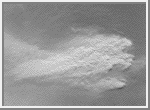 Dust Plume
Dust Plume
This is an example of a dust plume in the Solis Planum region. This image was taken during the springtime for this region. Plumes are found primarily in the southern hemisphere, in highlands such as Syrtis Major and in elevated regions such as Tharsis. (Image Credit: Calvin J. Hamilton)

 Mars
Mars